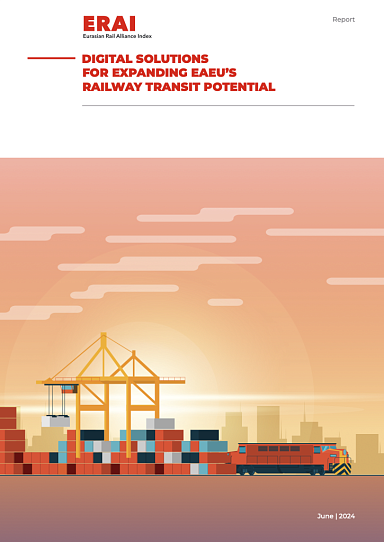The EAEU’s transit potential is in the spotlight amid burgeoning trade between China and the EU, the world’s two largest economies. The expansion of the transport industry goes hand in hand with the transition to legally binding electronic document management, the use of artificial intelligence and electronic navigation seals, which combine to form an ecosystem of digital transport corridors, thus bringing all digital technologies together and maximising the transparency and efficiency of the cargo transport process. In this regard, forming and expanding digital transport corridors has taken on particular importance.
In addition to a number of cargo transport-digitalising procedures adopted within the Union, for geographical reasons, the focus is also on EAEU-China joint work. The EAEU’s transit potential is particularly important for China-Europe-China rail cargo transport. Above all, the transit of cargo across the EAEU member states using the Eurasian rail route via Kazakhstan, Russia and Belarus is the shortest route for transporting cargo between China and the EU.
In the first four months of 2024, physical cargo traffic along the route increased by 51 percent compared to the same period the year before. As a priority area, building digital transport corridors is a key focus of the roadmap signed by the EAEU and China in February 2023.
Implementing the shipment tracking mechanism using electronic navigation seals (ENS) is a separate area of the digitalisation effort. In December 2023, the authorised ENS operators from the EAEU countries signed an agreement on cooperation, which will come in effect in the first half of 2024. The use of navigation seals will ensure safety and reliability of cargo transport and minimise the need for monitoring along the way. ENSs play an important role in streamlining customs control during transit rail cargo transport. Above all, the seals significantly reduce the customs costs, and installing a sensor takes just 15 minutes, which provides for the efficient use of available time resources. As an efficient digital solution, navigation seals help speed up the customs procedures. According to forecasts, by 2030, the number of ENS-enabled cargo shipments will reach the 500,000 mark.
The use of AI-technology in organising the transport process on all types of transport and transport infrastructure facilities contributes to creating proper conditions for improving the efficiency of transport, and forming whole new areas of activity for the economic entities. t. In addition, in the context of all industries, transport and logistics companies may become one of the key consumers of AI-based solutions in or before 2030.
There are already instances of practical use of AI in railway transport and, in addition, work is underway to implement a number of systems that use AI technology. Thus, the three main digital solutions — electronic document management, electronic navigation seals and systems and projects using AI — have a significant potential for increasing the efficiency and speed of rail cargo transport. Eventually, implementing the above digital services, especially if they are used as a package, will help fully tap the potential of the transit rail cargo transport.
Expanding transport infrastructures of the member states will give an additional boost not only to the growth of trade within the EAEU, but also to transit cargo traffic through the Union countries. Coordination of the efforts to jointly develop digital transport corridors through digital services is a significant resource for integration and a way to turn the EAEU into a bridge between Europe and East Asia.




